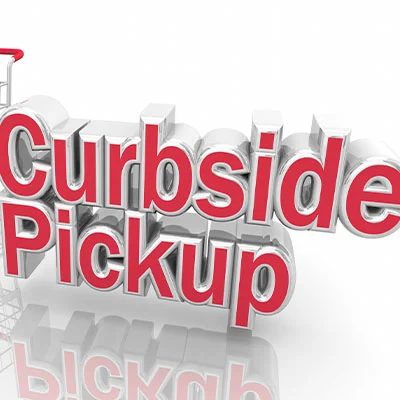
Before COVID-19, businesses looking to build an e-commerce presence were hamstrung by the lack of speed in developing their current labor pool with the skills required for e-commerce, as well as fulfillment automation capability. Others dabbled in a web storefront strategy. These companies typically lacked the sophisticated technology, generally a good Warehouse Management System (WMS), needed to pick multiple orders to a cart and then have them quickly and accurately auto-sorted through a RF or mobile device. The result was unsustainable inefficiencies. We saw that e-fulfillment costs in some cases exceeded 25 percent of sales.
In the meantime, Amazon.com, which controlled about half of all U.S. e-commerce going into the crisis, kicked into high gear during it. At one point during the crisis Amazon customers spent as much as $11,000 a second on its products and services. By contrast, nearly 1 million traditional retail workers were furloughed in one week, and more than 250,000 stores had shut down. Many stores may never reopen, or may look very different going forward. The same goes for fulfillment centers. Many have and will continue to be physically modified to ensure worker safety. The flow of operations may need to be modified as well.
For many e-tailers, the “new normal” of e-commerce will be challenging and may seem insurmountable, but getting to the other side is doable.
E-Commerce Logistics Strategy for the New Normal

Understand what current state looks like in the new normal − starting with your cost per-order.
Are your costs segmented by freight, management and supervision, labor, facilities and shipping supplies?
Then understand what and how these costs can be managed, optimized and reduced. Typically, freight costs exceed the sum of the other components. Reducing freight dollars spent per revenue dollars created should be an immediate focus.
The questions to ask from this point are critical to the next step.
- Is your network aligned to best serve the customer?
- Are your shipping lanes optimized?
- Are you using the best shipping partners to meet your strategic goals?
Stay on top of your rates. Evaluate them frequently, and renegotiate them when appropriate.
This is where collaborating with a seasoned logistics expert adds enormous value to you e-commerce platform. Our long and deep relationships with carriers, our data analytics and information mining expertise and our proprietary audit technology platform give you end-to-end visibility to answer those key questions.
Align Your Operations and Your Network

Once your network is optimized, it is time to consider how your operations play into that. What questions can quickly be addressed?
- Can products be drop-shipped from a manufacturer?
- Can indirect supply management help you cut costs?
- Is your shipping schedule in line with your preferred shipping partner?
By asking these questions and making some quick, deployable solutions, you can improve your profitability profile in short order.
Benchmark your service-level performance with best-in-class metrics. How does your fulfillment center operation compare with leaders in the field?
Focus strongly on the efficiency of your picking and packing operations, which can account for more than half the cost of your order outside of outbound shipping. A thorough analysis of your fulfillment center process will yield changes to improve operations and reduce costs.
Apply technologies where it makes financial sense and where it fits your growth plans. Many legacy WMS applications were designed to manage fulfillment orders in pre-determined waves. They were not optimized to manage the unpredictable flows of e-commerce traffic. Today’s technology is built to allow orders to be picked for store and e-commerce simultaneously. This enables businesses to leverage inventory buys to achieve economies of scale.
Also, consider a multi-fulfillment center strategy, including BOPIS strategies. These can expedite orders to consumers quicker and reduce shipping costs. Facilities expansion can carry with it significant operating expense. An expert partner with a robust portfolio of data, expertise and carrier relationships can support your decision-making on this critical issue.
Improvement Focus Drives Customer Experience
Above all, be consistent with ongoing process improvements. Don’t consider e-commerce logistics just a project, it is a process that has to be constantly improving. Companies that dedicate full-time employees to process improvements are those that make the biggest strides.
Analyze your facility space requirements, and how labor is being utilized. Be open to suggestions on how to improve productivity and boost customer satisfaction. Make it a part of your corporate culture.
According to a recent study, millennial consumers who account for about $1.2 trillion in U.S. retail sales say they value the “experience” that accompanies an online order as much as the product itself. The “Generation Z” group coming up behind the Millennials shares those sentiments.
At the core of that experience is fast, timely delivery supported by in-transit visibility across multiple digital platforms. Succeed in executing on that final step, and you will achieve favorable word of mouth that can help build a brand. Fail, and that brand may not get a second bite.
Those attitudes were in place well before Covid-19. And they are unlikely to diminish. It is both an enormous opportunity, and daunting challenge. Is your e-commerce strategy ready?
Master Logistics, Power Competitive Advantage
You invest a lot of money in your logistics network. But are you maximizing its value? Do you feel like your logistics operation is more of a cost center than a tool of competitive advantage?
It doesn’t have to be. In fact, with the right strategy and execution, logistics can drive the success of your enterprise. Companies like Amazon, Walmart, Target and Dell made logistics a priority, with spectacular results. There is no reason you can’t do the same!
To master your logistics strategy, read “Moving to the Front of the Line: Making Logistics a Competitive Advantage.”
